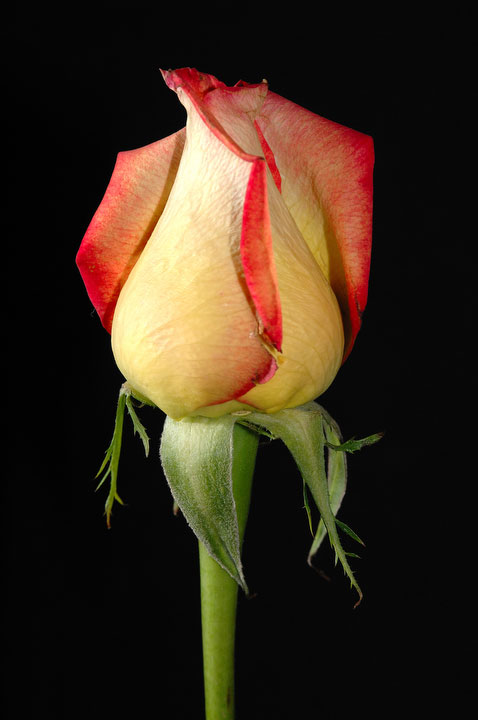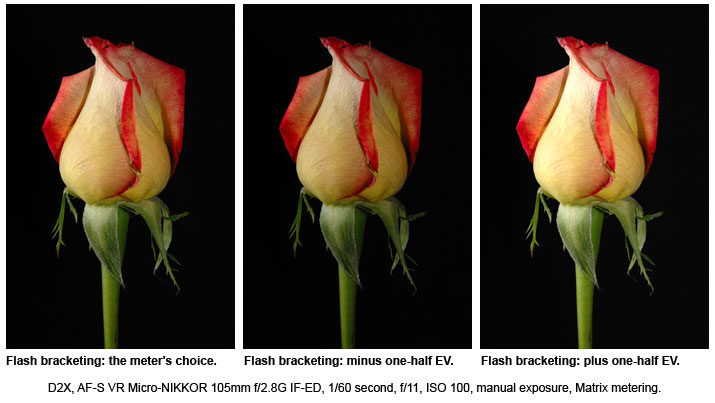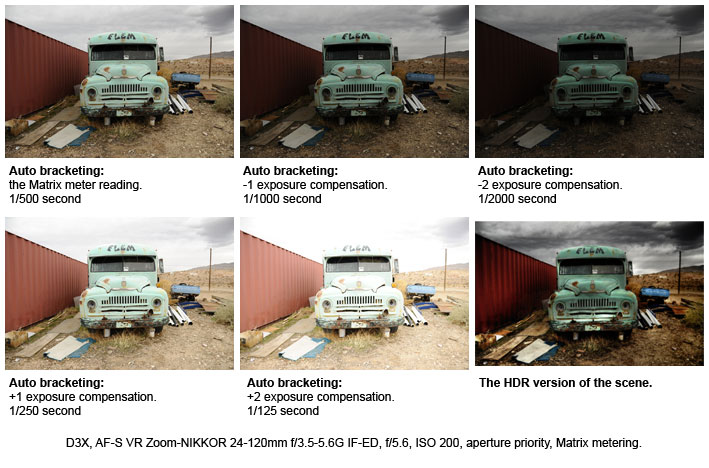Exposure Bracketing: The Creative Insurance Policy
Once upon a time—in the days when we shot film—bracketing was an insurance policy. It was a technique we learned from professional photographers, and they did it because it was their business to come back with the shot every time, no excuses. So when they faced tricky lighting conditions they'd bracket the shot; that is, they'd make two, three or more exposures below the meter reading and two, three or more above it. Most of the time they'd do it by varying the shutter speed to keep the f/stop and thus the depth of field (the zone of sharpness in front and behind the subject) constant. They could also bracket by using the camera's exposure compensation feature.
Lindsay Silverman, Nikon senior product manager, is quite succinct about his reasons for bracketing: "Once in a lifetime shots," he says. "A sunset in Venice, a graduation ceremony, a multiple flash setup down under the Brooklyn Bridge. I couldn't come back to shoot those and, with film, I couldn't see my results immediately as I now can with digital photography, so I couldn't fine tune my technique on the fly." So he'd use his best metering know-how and technique. Then, because of "the paranoia factor," he'd shoot a one-third stop exposure bracket.
Today, with digital, we see our results right away and make adjustments on the spot. Does the image look too light? Make a -1/3 exposure compensation adjustment and shoot the scene again.
These days, why bracket?
Several reasons, actually. First, because of time. Maybe the situation doesn't give us the luxury of checking our results. We've got to shoot quickly, so we set our Nikon D-SLR for auto bracketing and we've got the tricky lighting covered.
Second, for creative control. Simply, the "over" or "under" image might be the one that best captures the mood of the scene.
Third, because we can choose to bracket not only exposure, but white balance and flash. White balance bracketing changes the color temperature to effectively cool or warm a scene by adjusting its blue and/or amber tones. Flash bracketing will quickly and automatically bracket the output of a Nikon Speedlight while maintaining the camera's settings; most importantly, the amount of ambient light reaching the camera's sensor remains constant.
Flash bracketing will quickly and automatically bracket the output of a Nikon Speedlight while maintaining the camera's settings; most importantly, the amount of ambient light reaching the camera's sensor remains constant.
Finally, bracketing is essential to high dynamic range (HDR) photography. HDR is a method of capturing in a single image the wide range of tones in a high contrast scene by taking a set of exposures, usually three, five or seven, at different exposure values; then, using software programs, combining the images into a single image that reveals the entire tonal range of the scene. "For my HDR photography, I use autoexposure bracketing," Lindsay says, "and set the camera for aperture priority to insure a constant depth of field."
The specific settings for these bracketing techniques will vary depending on the Nikon camera and Speedlight you're using, so it's best to check your instruction manual to familiarize yourself with the menus and steps.
These days bracketing is a lot more than insurance—it's another example of digital photography's creative opportunities.









